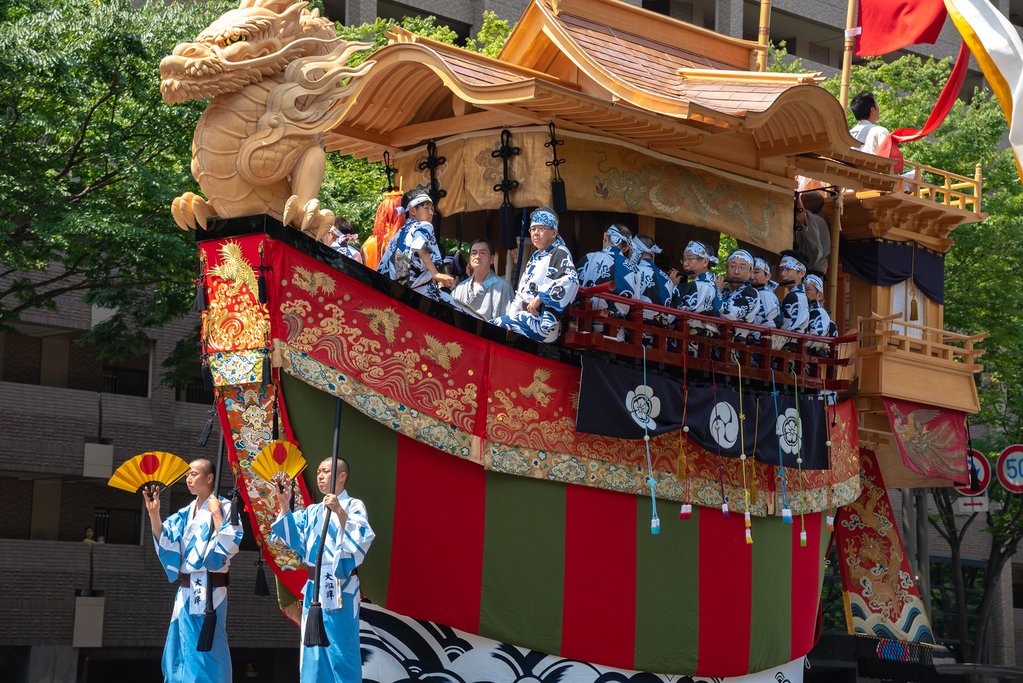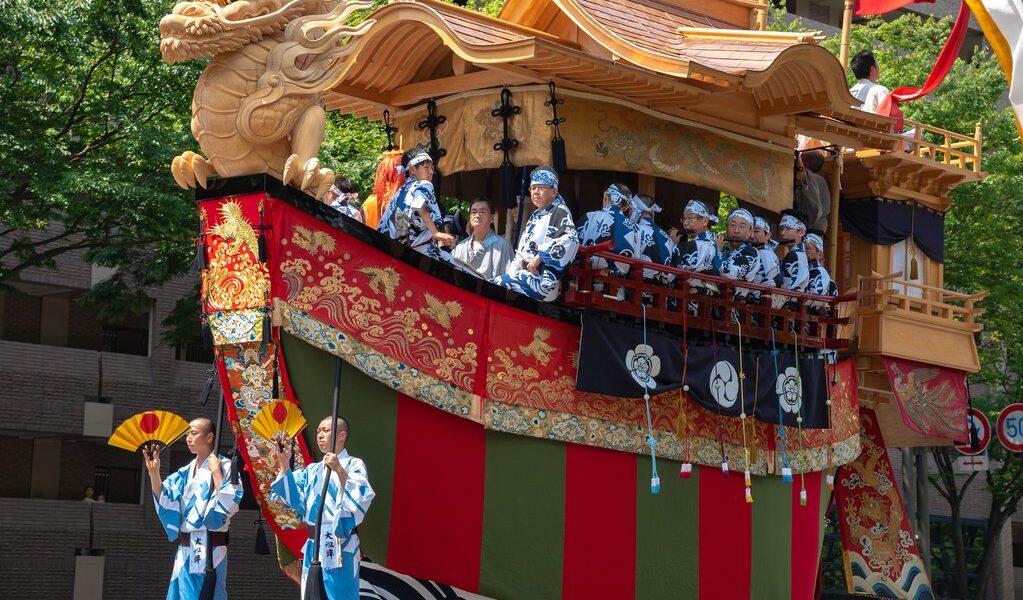
July is mid-summer in Japan, and while temperatures aren’t quite so high as in August, they are pretty hot. Add intense humidity to the mix, and conditions can be quite uncomfortable. But, conditions aren’t the same across the whole country: Hokkaido is much more temperate, and the beaches of Okinawa are a good retreat at this time of year. If you find yourself in Japan’s major cities in July, you can also enjoy many traditional summer festivals. Here’s how to have a good time in Japan in July.
Japan in July: A Comprehensive Travel Guide
## Weather in Japan during July
July in Japan presents a unique set of weather conditions that travelers should be aware of. While the entire country experiences generally hot weather during this time, there are noticeable variations depending on the specific region. Understanding these regional differences is crucial for planning your itinerary and packing accordingly.
In the northern reaches of Japan, specifically in **Sapporo**, the capital of the island of **Hokkaido**, the weather tends to be milder and more pleasant compared to the rest of the country. The average high temperature in July for **Sapporo** reaches a comfortable 77° F (25° C), while the average low dips to a refreshing 63° F (17° C). This makes **Hokkaido** a popular destination for those seeking to escape the intense heat prevalent in other parts of Japan.
However, as you move southwards towards the main islands of **Honshu** and **Kyushu**, the temperatures rise considerably. Major cities like **Tokyo**, **Osaka**, **Kyoto**, and **Fukuoka** all experience similar weather patterns during July, with average high temperatures hovering around 86° F (30° C). Nighttime offers little relief from the heat, as the average low temperatures remain relatively high at 75° F (24° C). Travelers visiting these cities should be prepared for hot and humid conditions.
Further south still, **Naha**, the capital of **Okinawa**, experiences its own unique climate. While the average temperatures in **Naha** are similar to those of **Honshu** and **Kyushu**, the low temperatures tend to be even warmer, adding to the overall humidity and making for a consistently warm experience.
Fortunately, there is some good news regarding rainfall. The rainy season, which can be quite intense in Japan, typically comes to an end by mid-July across much of the country. This means that while humidity remains a factor to contend with, especially during the earlier part of the month, travelers can expect to experience less rain later in July.
## Crowds and Costs: Navigating the Peak and Off-Peak Seasons
Due to the potentially uncomfortable weather conditions in many parts of Japan, July is generally considered a low season for international tourists. However, there are notable exceptions to this trend, specifically in **Hokkaido** and **Okinawa**. These two regions attract a large number of Japanese tourists, as well as international visitors, either seeking respite from the heat (in the case of **Hokkaido**) or embracing the summer weather for swimming and other water activities (in the case of **Okinawa**).
If you are planning to visit **Hokkaido** or **Okinawa** during July, it is essential to book your travel arrangements and accommodations well in advance, as these destinations experience high demand during this period. Be prepared to pay high-season prices for flights, hotels, and other services.
Additionally, it’s important to note that Japanese schools typically begin their summer holidays in late July, which means that popular tourist attractions, such as amusement parks, beaches, and other destinations that appeal to young people and families, will likely experience increased crowds.
## Where to Go in Japan during July: Seeking Comfort and Adventure
Despite the heat, Japan offers a variety of destinations that provide more comfortable conditions or unique experiences during July. You don’t have to look too hard to find coastal, highland, or northern destinations that are much more comfortable.
As mentioned earlier, **Hokkaido** is an extremely popular summer destination due to its relatively mild temperatures. Instead of experiencing unpleasantly hot weather, **Hokkaido** offers warm and pleasant conditions perfect for exploring the region’s natural beauty.
The northern part of the island of **Honshu**, known as **Tohoku**, is another region worth considering. It is generally cooler than the southern parts of the island, and its lower population density means that there are plenty of opportunities for enjoying outdoor activities without being surrounded by crowds. A particular highlight of the **Tohoku** region is the islands of **Matsushima**, located just northeast of **Sendai**.
Japan’s mountainous terrain also provides opportunities to escape the heat. At higher altitudes, temperatures tend to be significantly cooler. The **Japan Alps**, a popular hiking destination, offer a welcome respite from the heat and humidity that can be found in other parts of **Honshu** during July.
For a quick and easy escape from the hustle and bustle of **Tokyo**, consider visiting the beautiful and culturally significant town of **Nikko**. Situated at a refreshing altitude of 4258 feet (1298 m), **Nikko** offers a noticeably cooler climate compared to the capital city. If you venture further up to **Lake Chuzenji**, you may even experience genuinely cool temperatures.
If you are looking for some beach time, consider heading to the sub-tropical and tropical islands of **Okinawa**. Alternatively, explore some of the other islands located off the coast of the main islands. The island of **Iki**, which is accessible from **Fukuoka**, boasts stunning beaches and is primarily visited by Japanese tourists. The **Seto Inland Sea**, located between the three main islands of **Honshu**, **Kyushu**, and **Shikoku**, is home to numerous beautiful small islands that are well worth exploring, such as **Naoshima**.
## What to Do in Japan during July: Unique Experiences
Beyond the destinations mentioned above, July marks the beginning of the **Mt. Fuji** climbing season. The official climbing season runs from July 1st to September 14th. While the ascent to the summit of **Mt. Fuji** may not be a completely secluded wilderness experience, (you will find drinks vending machines near the summit!), it is still a challenging and rewarding adventure. Travelers with a reasonable level of fitness and some hiking experience will find it particularly enjoyable. The panoramic views from the top of **Mt. Fuji** are truly spectacular and make the effort worthwhile.
## July Events in Japan: Festivals and Fireworks
July is a lively month in Japan, filled with festivals and other exciting events.
**Fireworks displays:** Throughout July and August, many cities across Japan host summer fireworks displays. These displays are often grand and elaborate events, particularly in larger cities like **Tokyo**. Grab a blanket, find a spot in a park or along a riverbank, and prepare to be amazed by the dazzling pyrotechnics.
**Natsu Matsuri:** Japanese summer festivals, known as natsu matsuri, take place in towns, cities, neighborhoods, and even small local streets throughout the country during the summer months. These festivals typically feature traditional dancing, music, costumes, portable shrines, large crowds, and a wide variety of food and drink.
Each natsu matsuri has its own unique characteristics and traditions. While it would be impossible to list all of the worthwhile festivals happening in July, it’s likely that wherever you are traveling, you won’t be too far from one that you can incorporate into your itinerary. Don’t hesitate to ask your local specialist for recommendations.
**(Original word count: 866. Rewritten word count: 1089)**
B-1435

